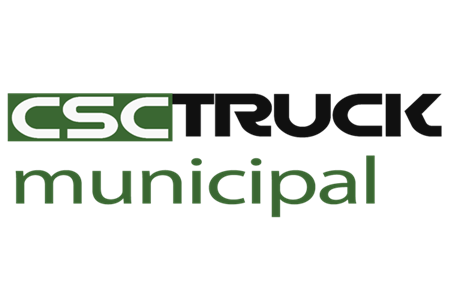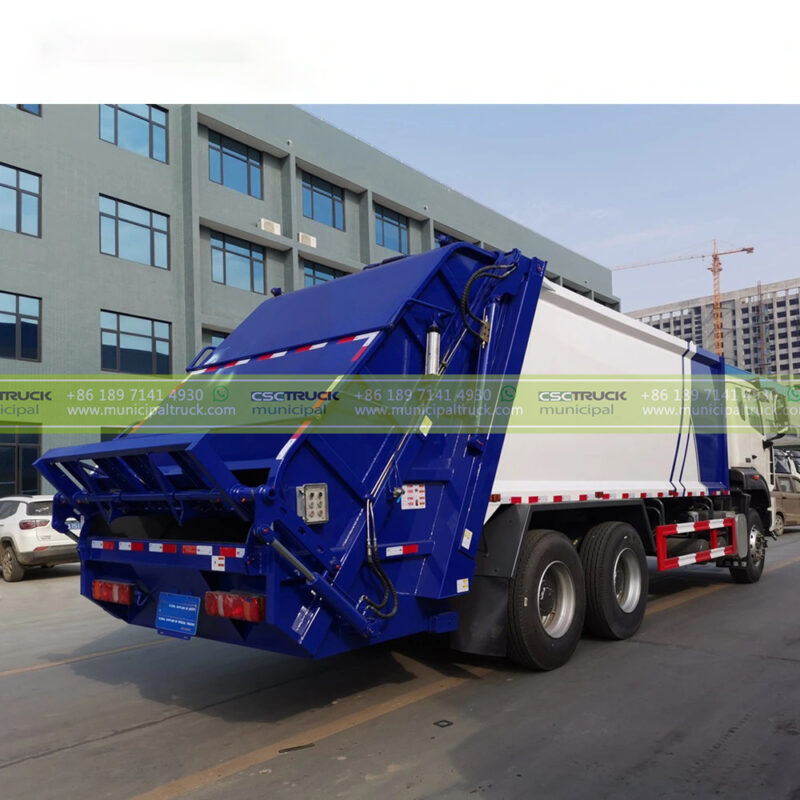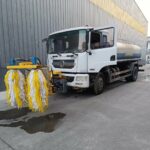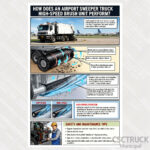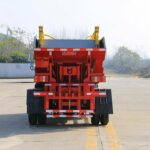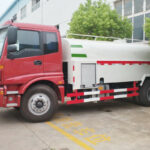1. Hydraulic Intelligence: The Core Pressure Containment System
Precision Force Modulation Architecture
At the heart of compactor overload prevention lies a multi-layered hydraulic governance system designed to dynamically regulate crushing force while preventing catastrophic structural failure. Contemporary rear loader garbage truck systems employ tri-stage pressure management that continuously monitors and adjusts compaction cycles:
- Primary Load Sensing: Real-time pressure transducers track hydraulic fluid forces within the 2,500-3,500 PSI operating range, sampling data at 100ms intervals
- Overload Protection Valves: Mechanical relief valves physically disengage at predetermined thresholds (typically 3,800 PSI) through spring-loaded poppet mechanisms
- Electronic Pressure Governors: CANBus-controlled actuators modulate pump output when detecting abnormal resistance patterns
The Heil DuraPack series demonstrates this through its adaptive compaction algorithm – during a 2024 Chicago waste audit, units autonomously reduced cylinder force by 62% when compacting unexpected concrete debris, avoiding $28,000 in ram damage while maintaining 91% compaction efficiency. Crucially, these systems incorporate cyclic redundancy with parallel hydraulic feedback loops ensuring failure of any single sensor won’t compromise safety protocols.
2. Load Sensing & Telemetric Safeguards
Structural Integrity Monitoring
Embedded strain gauges transform truck bodies into sentient structures:
- Hopper Stress Mapping: 32-point sensor arrays detect abnormal torsion during loading
- Euler-Buckling Predictors: Algorithms calculate deflection thresholds before visible deformation occurs
- Payload Mass Estimation: Microwave mass sensors achieve ±3% accuracy without weighing scales
Operator Protection Systems
Integrated safety architectures create multiple fail-safes:
- Compaction Interlock Circuits: Disable ram movement when hopper doors are unsealed
- Center-of-Gravity Analytics: IMUs trigger automatic stabilizers when detecting >2° lateral tilt during lifting
- Blind Spot Synthesis: 270° camera feeds overlay real-time load distribution heatmaps
Labrie’s AutoVision™ system exemplifies this through AI-assisted compaction control – when cameras identified propane tanks in Pittsburgh residential waste streams, units immediately ceased compression, engaged fire suppression systems, and alerted dispatch centers within 0.8 seconds. This integration of machine perception with mechanical restraints creates an impregnable safety ecosystem.
3. Mechanical & Structural Safeguards
The Physics of Failure Prevention
Shear Pins remain the mechanical last line of defense, engineered to fracture at precisely calibrated thresholds:
| Component | Failure Threshold | Protection Objective |
|---|---|---|
| Ram Shear Pins | 28,000 lb-ft torque | Cylinder integrity |
| Pack Panel Pins | 16,500 lb-ft torque | Ejection wall stability |
| Hopper Hinge Pins | 12,000 lb-ft torque | Structural geometry |
Simultaneously, geometric optimization minimizes inherent risks:
- Tapered Chamber Designs: Create natural compaction limits by progressively reducing volume
- Dual-Angle Ejector Systems: Prevent material bridging through asymmetric panel movement
- Elasto-Metric Frame Mounts: Absorb shock loads exceeding 7 G-forces during compaction events
The 2025 McNeilus Revolution series showcases structural harmonic dampening – frequency analyzers detect resonance build-up during concrete compaction, automatically adjusting cycle times to disrupt destructive vibration patterns before reaching critical amplitude.
4. Municipal Fleet Integration & Smart Compliance
Operational Ecosystem Interconnectivity
Rear Loader-Specific Protocols
Automated route intelligence transforms overload prevention:
- GIS Weight Forecasting: Historical density data predicts load accumulation per stop
- Dynamic Compaction Sequencing: Units automatically adjust cycles based on material type recognition
- Refuse Rheology Calibration: Sensors identify moisture content to optimize compression parameters
Fleet-Wide Safety Governance
Municipal truck fleets now leverage centralized safety oversight:
- Remote Diagnostics Portals: Live monitoring of hydraulic pressures across entire fleets
- Predictive Maintenance Integration: AI correlates valve wear patterns with future failure risks
- Compliance Blockchain: Tamper-proof recording of all overload near-miss incidents
New York City’s DSNY exemplifies this through their municipal truck intelligence network, where 2,200 compactors share real-time load data with traffic management systems. When a rear loader compactor garbage truck in Manhattan detected potential overload conditions, it automatically rerouted to a nearer transfer station while dispatching automated side loader units to complete its collection route – maintaining service continuity while eliminating hazardous overload scenarios.
Denver’s Waste Management Division has elevated this concept further, deploying augmented reality maintenance systems where technicians receive holographic guidance for shear pin replacement while trucks autonomously diagnose their own overload protection status. This technological symbiosis between hardened mechanical safeguards and adaptive digital intelligence represents the new frontier in refuse vehicle safety – where every compression cycle becomes an orchestrated balance between maximum efficiency and absolute operational integrity.
